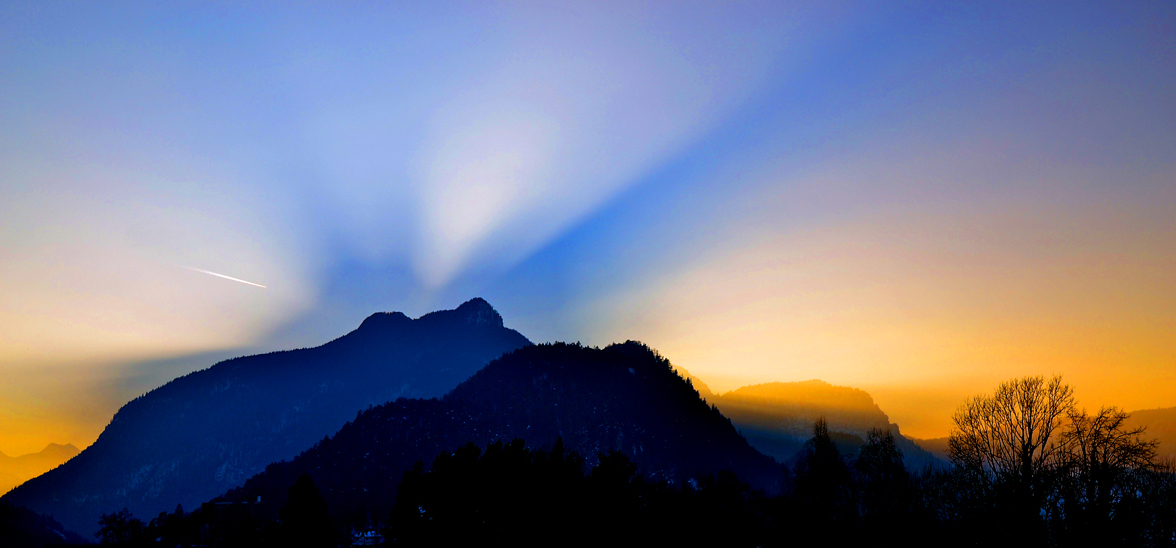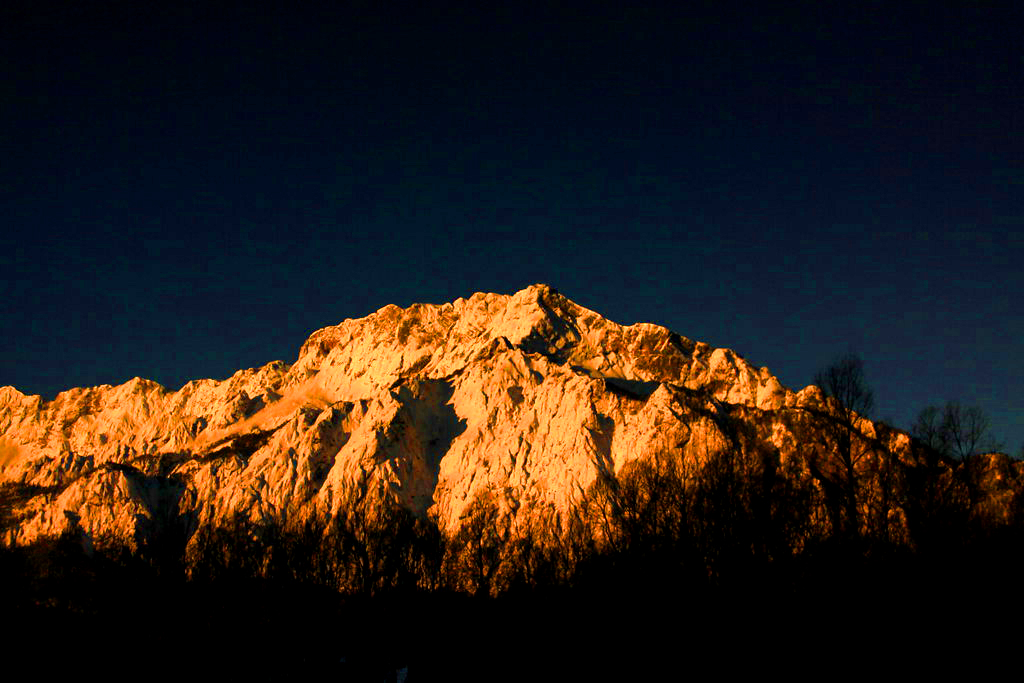BERCHTESGADEN MYTHS

SEE ALSO:
NAME ORIGINS OF BERCHTESGADEN
"Berchta" is said to refer to an Alphine goddess and "gaden" means garden.
"Berchta" also commonly known as "Percht" is known as a goddess in Alpine paganism in the Upper German and Austrian regions of the alps. Her name may mean "bright one" (Old High German beraht, bereht, from Proto-Germanic *brehtaz) and is probably related to the name "Berchtentag," meaning the feast of the Epiphany. Berchta or Percht is an alpine goddess of women and children.
An alternative explanation is that the name "Perchta" is related to the Old High German verb "pergan," meaning "hidden" or "covered."
Perchta is often identified as stemming from the same Germanic goddess as Holda and other female figures of German folklore . According to Jacob Grimm (a German philiologist 1785-1863) and Lotte Motz (an Austrian-American scholar 1922-1997), Perchta is Holda's southern cousin or equivalent, as they both share the role of "guardian of the beasts" and appear during the Twelve Days of Christmas, when they oversee spinning. (Grimm, 1882) (Motz according to Hilton 1984).
Grimm says Perchta or Berchta was known "precisely in those Upper German regions where Holda leaves off, in Swabia, in Alsace, in Switzerland, in Bavaria and Austria." (Grimm, 1882:272)
Name Origins - Perchta (Wikipedia)
Berchta: Ancient Alpine Goddess of Women, Children, and the Perchten (Otherworldly Oracle)
THE UNTERSBERG

The Untersberg is the northernmost massif of the Berchtesgaden Alps, a prominent spur straddling the border between Berchtesgaden, Germany and Salzburg, Austria. And its name directly translates to "the under mountain." Some people say that Hitler had a great fascination with the Untersberg.
There are many strange myths and legends surrounding this "under mountain," such as that the mountain is inhabited by demons, spirits, strange beasts, lost civilizations and dwarf-like beings.
LEGENDS SURROUNDING THE UNTERSBERG
According to one tale, the Holy Roman Emperor, Frederick Barbarossa (1122-1190), is asleep inside Mt. Untersberg until his resurrection. His beard is said to be growing longer and longer around a round table and to have grown round two times. Myth says that when the beard has grown three times around the table the end of the world has come. When Frederick leaves the mountain, there will be no further Holy Roman Emperor and the last great battle of humankind will be fought at the pear tree on the Walserfeld, a pasture near Wals, west of Salzburg. There is a similar legend for the Kyffhäuser Mountain in Thuringia and Trifels Castle. (Wikipedia) (Speer, Albert (1995). Inside the Third Reich. London: Weidenfeld & Nicolson. p. 137.)
Other legends say that it is Charlemagne waiting inside the Untersberg, taken care of by the Untersberger Mandln, small dwarf-like creatures. Every hundred years he awakes and when he sees the ravens still flying around the Untersberg he sleeps for another century. (Wikipedia) (Speer, Albert (1995). Inside the Third Reich. London: Weidenfeld & Nicolson. p. 137.)
THE LEGEND OF KING WATZMANN
The Legend of King Watzmann is tied to the highest mountain in the Berchtesgaden Alps, a mountain that is 2,713 meters high.
"According to the legend, many thousands of years ago, the region of Berchtesgaden was ruled by King Watzmann, a man known and feared for his cruelty toward farmers. The king liked to force his serfs to draw their own plows themselves instead of allowing them to use their oxen. One day, a farmer called Hois, who had had nothing to eat for three days and was weak with hunger, stumbled over a stone. As he struggled to right himself, a small man no bigger than his thumb appeared at his side. Signaling to keep quiet, the tiny man climbed into the serf’s pocket. That evening Hois rushed home and, taking the little man from his pocket, demanded to know who he was. 'I am Heinzel, and I have come to help you avenge yourself of King Watzmann’s tyranny. Gather your farmer friends together and I shall tell you what to do.' Heinzel’s plan was that each farmer gather pebbles with which to ward off the King’s dogs. Though the farmers were by nature suspicious, early next morning, they filled their pockets with stones. A few hours later, one of the serfs happened to stumble. Before the hounds were able to attack, however, the farmer reached for a stone. To his amazment the target was struck dead. Encouraged, his companions began to pelt the king and his dogs with stones. Soon the oppressor Watzmann and his animals lay dead beneath a mountain of stones. The farmers, freed from torment, lived long and happy lives and even today we can admire the Watzmann mountains near Berchtesgaden, under which the king was buried all those centuries ago together with his wife and children." The mountains are calling and I must go.
RUMORS OF TIME ANOMALIES
Another strange legend is one that hikers report. Of missing time, loosing consciousness and spontaneously teleporting to different parts of the mountain. (Mysterious Universe).
"One of the weirdest stories concerning the anomalies of missing time and teleportation at Untersberg was described by the Austrian author calling himself Stan Wolf, his pen name, in a 2011 book titled Gems of Dominion: Mysterious Mount Untersberg, which would end up expanding to encompass a full 6 volumes. Wolf claimed that he actually went to the mountain with a friend and actively searched for these time slips, actually finding some locations where their watches would diverge by seconds or minutes. After exploring more of the area, Wolf says that they came across a group of men living in one of the many caves of the mountain, and that these people claimed to be SS soldiers from World War II, still young and under the command of the notorious SS general Hans Kammler. Bizarrely, the alleged soldiers appeared to have had no idea that so many years had passed, and seemed to truly believe that the war had ended only months before. Wolf then ascertains that the cave they had been hiding out in displays a major temporal anomaly, with time passing by at a much slower pace within its confines." (Mysterious Universe).
EXTENSIVE CAVE NETWORK
There are also several legends about the cave system below the mountain.
Below the Untersberg is an extensive cave network. Originally these caves were thought to be a legend. However, it is now known that there is an extensive cave network. So far, more than 400 have been explored—including the Schellenberg ice cave at an elevation of 1,570 m (5,150 ft), a show cave since 1925, and the Kolowrat Cave with a 300 m (980 ft) high dome. The Riesending cave with a depth of 1,148 m (3,766 ft) and a length of 19.5 km (12.1 mi) is the largest known in Germany. There also is a lake at 930 m (3,050 ft) depth. An expedition in August 2008 revealed that its lowest point had not yet been reached.
SEE THE UNTERSBERG BY CABLE CAR
If you want to reach the summit of the highest mountain around Salzburg but prefer to avoid the strenuous hike, then enjoy a comfortable ride to the top on the Untersberg cable car. In operation since 1961, the cable car connects the base station in Grödig/St. Leonhard (456 m above sea level) and the summit station of Geiereck (1,776 m) rising 1,320 m in altitude.
Untersbergbahn - Official Cable Car Site
Ride the cable car to the summit of the Untersberg (Grodig)
The Untersberg Cable Car (Salzburg Portal)
LINKS ON THE UNTESBERG
Untersberg (Wikipedia)
The Mysteries of Mt. Untersberg: Myths and Legends (Travel Hippies)
High Strangeness, Weird Vanishings, and a Cursed Mountain (Mysterious Universe, 6-11-17)
Mysterious Mountain Untersberg (Project Avalon, 10-28-14)
Untersberg - The Mystery Mountain (ATS, 8-24-08)
BRIEF STATEMENT OF PUBLICATIONS PRINCIPLES. The World Future Fund serves as a source of documentary material, reading lists and internet links from different points of view that we believe have historical significance. The publication of this material is in no way whatsoever an endorsement of these viewpoints by the World Future Fund, unless explicitly stated by us. As our web site makes very clear, we are totally opposed to ideas such as racism, religious intolerance and Communism. However, in order to combat such evils, it is necessary to understand them by means of the study of key documentary material. For a more detailed statement of our publications standards click here.